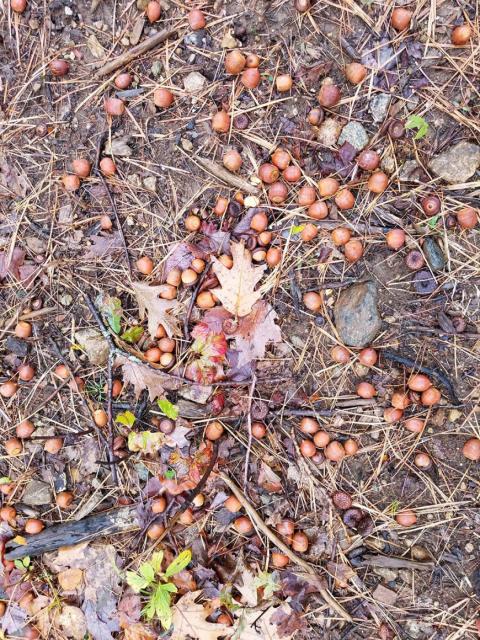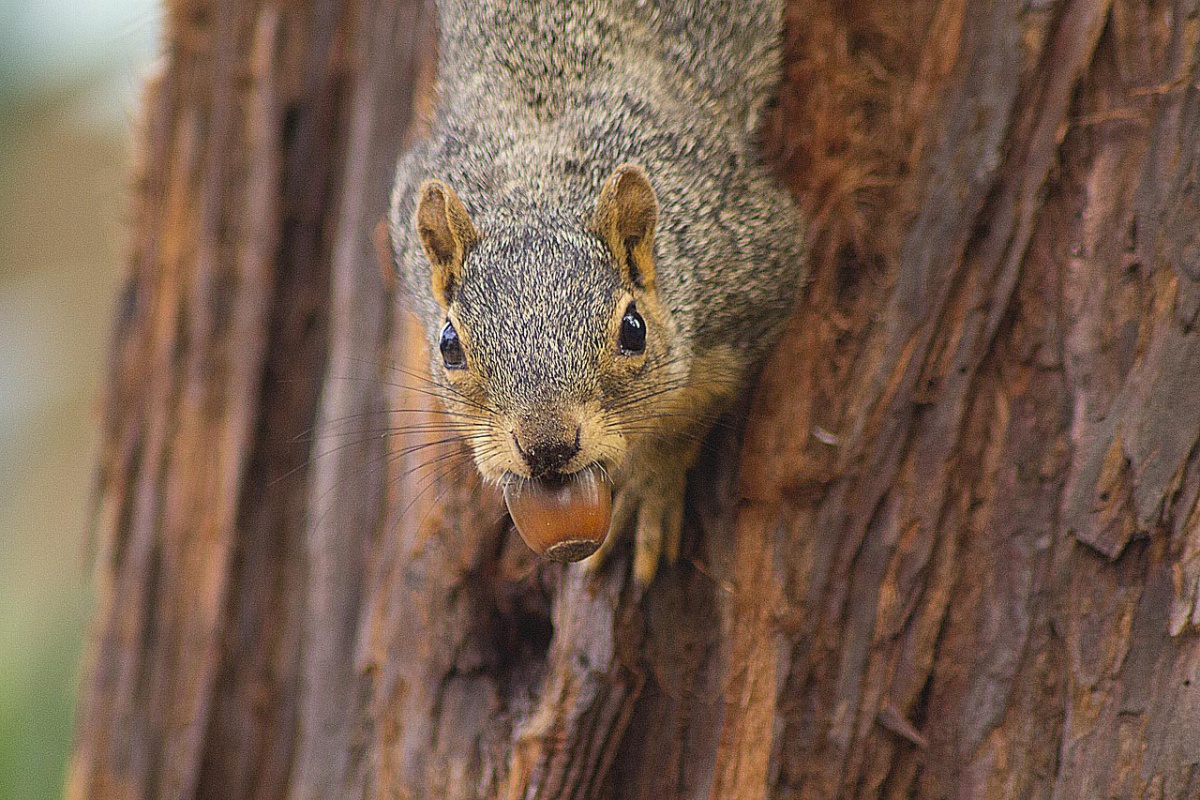Acorns, Acorns Everywhere

Anyone with oak trees growing in their woodlots probably has noticed an extraordinary amount of acorns on the ground this fall. This bumper crop is known as a mast year. The term “mast” comes from the word “masticate”, meaning to chew, and refers to food. Acorns are known as hard mast, and are one of the two most important types of hard mast for wildlife in the New Hampshire woods, with beech nuts being the other.
The Crop
Acorn crops tend to be highly variable, with a huge amount of acorns some years, and very few in other years. Studies show that during bumper crop years, which occur on average two out of ten years, there can be more than 250,000 acorns per acre. That translates into more than five acorns per square foot. During poor years, there may be only 20,000 to 65,000 acorns per acre, or an average of one acorn per square foot. What causes this occasional massive amount of acorn production? A common theory has to do with the critters that eat acorns. Since acorns are the key to perpetuating oaks, and acorns are so tasty to critters, if oaks produced steady acorn crops every year the populations of animals that eat them would stay steady as well. Fewer acorns would survive to become seedlings. The theory is that oaks occasionally produce huge amounts of acorns in order to overwhelm the animals that eat them, increasing the chances that some will survive.
The Consumer
So who eats the acorns? The list is long, and includes squirrels, chipmunks, voles, blue jays, eastern towhees, wood ducks, grouse, turkeys, deer, and bear. The animals that feed on acorns will go into winter with plenty of fat reserves, so should have a good chance at survival. As their populations increase, so will their predators. Not only will we likely see more squirrels, chipmunks, and turkeys next year, we’ll also see more of their predators – fox, fisher, bobcat, hawks, and owls to name a few.
One animal that will benefit from the bumper crop of acorns is the white-footed mouse. Unfortunately, the mouse is a host of the black-legged tick, which carries Lyme disease. If there’s a boom in the mouse population, we’ll also probably see a lot of ticks next year. (Let’s hope the foxes, hawks, and owls manage to eat plenty of mice.)
The Future
Despite the potential for the increase in ticks, a lot of wildlife that we enjoy benefit greatly from an abundance of acorns and we should perpetuate oaks where we can. We can manage our woodlots to produce more acorns by choosing oaks that are already good acorn producers, and harvest competing trees around them to increase the tree’s crown size, and thus the ability to produce acorns. We can also harvest our woodlots in a way that results in new oak seedlings. A shelterwood harvest opens up the canopy enough to allow adequate sunlight to reach the ground, while leaving good quality oaks to continue to grow, drop their acorns, and provide some shade. Acorns stand the best chance of survival and germination when they are buried about an inch deep in the soil. Ironically, blue jays and squirrels, which are some of the major predators of acorns, also help plant a lot of acorns when they bury them in the ground for later consumption, then don’t get around to eating them. Acorns can also be buried through the activity of logging equipment pressing acorns into the ground while traveling through the woods. This is best accomplished after the acorns have fallen and while the ground is unfrozen. (Soils should be dry and not saturated with water, in order to avoid unnecessary rutting and compaction.)
The oak is one of the most important trees in New Hampshire. Valued for timber as well as wildlife habitat, woodlot owners can do their part to help make sure there are plenty of oaks growing for the future. For advice on managing your woods for oak and acorn production, or forestry in general, contact the Grafton County Forester at 603-787-6944 or jim.frohn@unh.edu.

